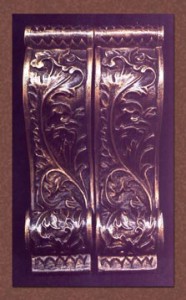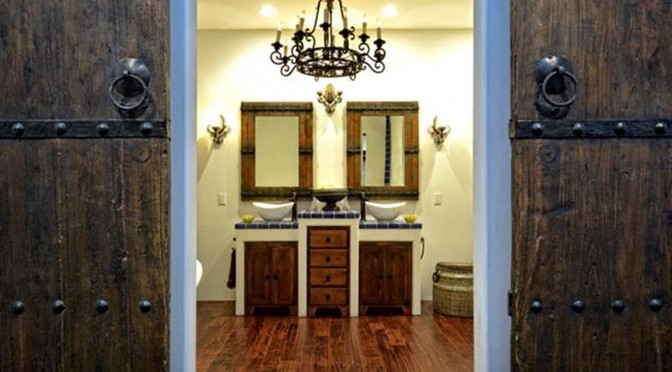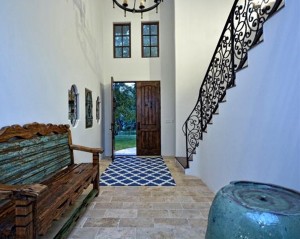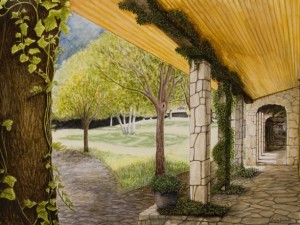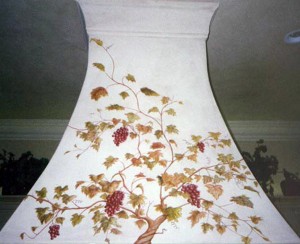Antiquing or “aging” is the faux painting technique used to simulate natural aging and wear and tear with the use of paint glazes, crackle glazes, bees wax, paper, hammers, sandpaper, or chains to distress and weather an object, wall,… The aged antiqued effect can be achieved by using a latex or oil color glaze or varnish that looks like an aged, brown, color or by whitewashing and wiping most of the white wash off. This antiquing faux finish can be used on furniture, built-in cabinets, walls, floors, and accessories. Surfaces need to be clean and dry and free of dirt, oil, or wax before antiquing. A water clean-up polyurethane varnish will stain and protect the surface or object your antiquing as well.
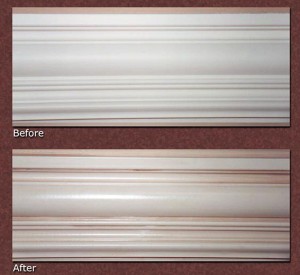
Color Washing
Color washing is the faux painting technique that gives you a soft, subtle, aged look to your walls. Color washing is a flexible faux painting technique which can be varied in appearance to the way in which the oil or latex paint is wiped off or on. You can use cheese cloth, brushes, or sponges for this finish. Color washing is great for walls that lack personality.

Before

Crackle
Crackle is a faux painting finish produced by using two varnishes having two different drying times which work against each other to produce a crazed, crackled, effect. The first coat of varnish is applied and left to dry. While the surface is still ” tacky “, the second application of varnish is applied.
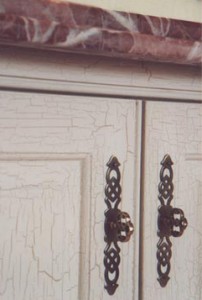
After
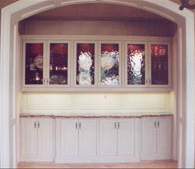
Before
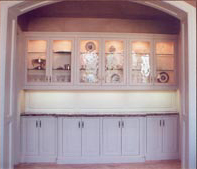
Frottage
The frottage technique is accomplished with the use of paint (oil or water based), glaze, and sheets of paper or plastic. The base coat is painted and left to dry. A second glaze coat of a different color is applied liberally, a sheet of paper or plastic is placed over the surface and rubbed smooth, the paper or plastic is then peeled away form the surface, and the process is repeated until all surfaces have been covered. This finish is useful for murals (for nondescript backgrounds or to distress the ground coat when creating faux marble).


Metallic Patinas
A faux painted metal patina can be applied to any paintable surface or object. Plain wrought iron metal can be faux painted to look like pewter, silver, copper, bronze, gold, aluminum, or platinum. Antiquing patinas can be added to create a subtle, aged look. A verdigris or patina is created when copper is exposed to the elements it turns a chalky, grayish, colored green, and a verdigris begins to form. This faux finish is frequently used on furniture, ornaments, and wrought iron railings. For indoors, a water-based black matte paint, white matte paint, as well as turquoise-blue, dark green, and raw umber universal tints. For outdoors, oil-based paint equivalents of the water-based paints and mineral spirits. First paint the base coat white, apply a second coat of gray, sponge or brush on the dark green, blending any obvious harsh marks with a stippling brush, while still wet, sponge on the darker turquoise mixture, blend, add the milky turquoise color with a brush to create highlights, and dust with rotten stone or spackle dust. To simulate a streaking, soak a sponge in water (water-based paint) or mineral spirits (oil-based) and dribble down the wet paint finish.

Plaster
Aged plaster is a faux painting technique used to create an Italian, “Old World”, look to your decor. This faux painting effect can be accomplished on water based painted walls (paint must have some degree of sheen such as: eggshell, satin) or on lime washed walls. One or several scumble glazes (warm colors like:burnt umber, burnt sienna, raw sienna, and yellow ochre) are applied to create areas of light and dark. Other techniques like stippling, color washing, color rubbing, frottage, a faded mural, or faux exposed brick add to the illusion. Plaster can be used to accent a wall or texturize an entire room. Create that “Old World” look in your wineroom with a plaster reveal or maybe a textural plaster covered with antiqung glazes.


Venetian Plaster
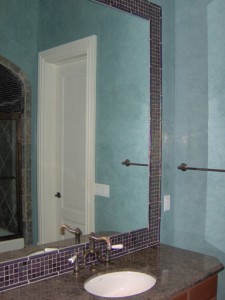
Sponging
Sponging is a quick faux painting technique and an easy way to freshen up a space. This faux painting finish can be done with water-based (mixed with acrylic scumble glaze) or oil-based paint (mixed with mineral spirits or oil scumble glaze). Choose 2 or 3 colors which are tonally similar. The base coat should be a semi-gloss for water-based paint and an eggshell base coat for an oil-based paint. The last color will be the dominant color.
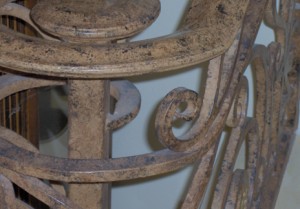
Stenciling
Stenciling is a faux painting technique in which paint is applied through a cut-out design. Different designs can be bought or created and cut out of cardboard or plastic with an Exacto knife. The best surface to stencil on is an eggshell base coat, latex may be used, but mistakes will not wipe off as easily.
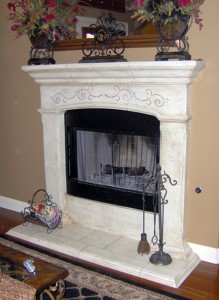
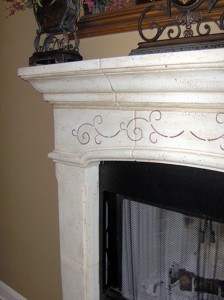
Gold Leaf/ Gilding
There are two types of gilding, water-based and oil-based. Oil gilding is less difficult. A transfer gold leaf is used in oil-gilding. The transfer leaf is applied to an almost dry, gold sized, surface. The gold sizing comes in different drying -time formulas. Oil-gilding cannot be burnished or polished, but varnishing gives it a nice high gloss. In water gilding fine leaves of gold leaf are applied to a finely, gesso surface. Sometimes the gesso is colored. All surfaces must remain completely dust and dirt free, it is then painted with a mixture of denatured alcohol, water, and size. The gold leaf is applied to the surface, and when dry it is burnished and polished to a high gloss. Gold leaf and transfer leaf are great base-coats for a tortoiseshell finish.
